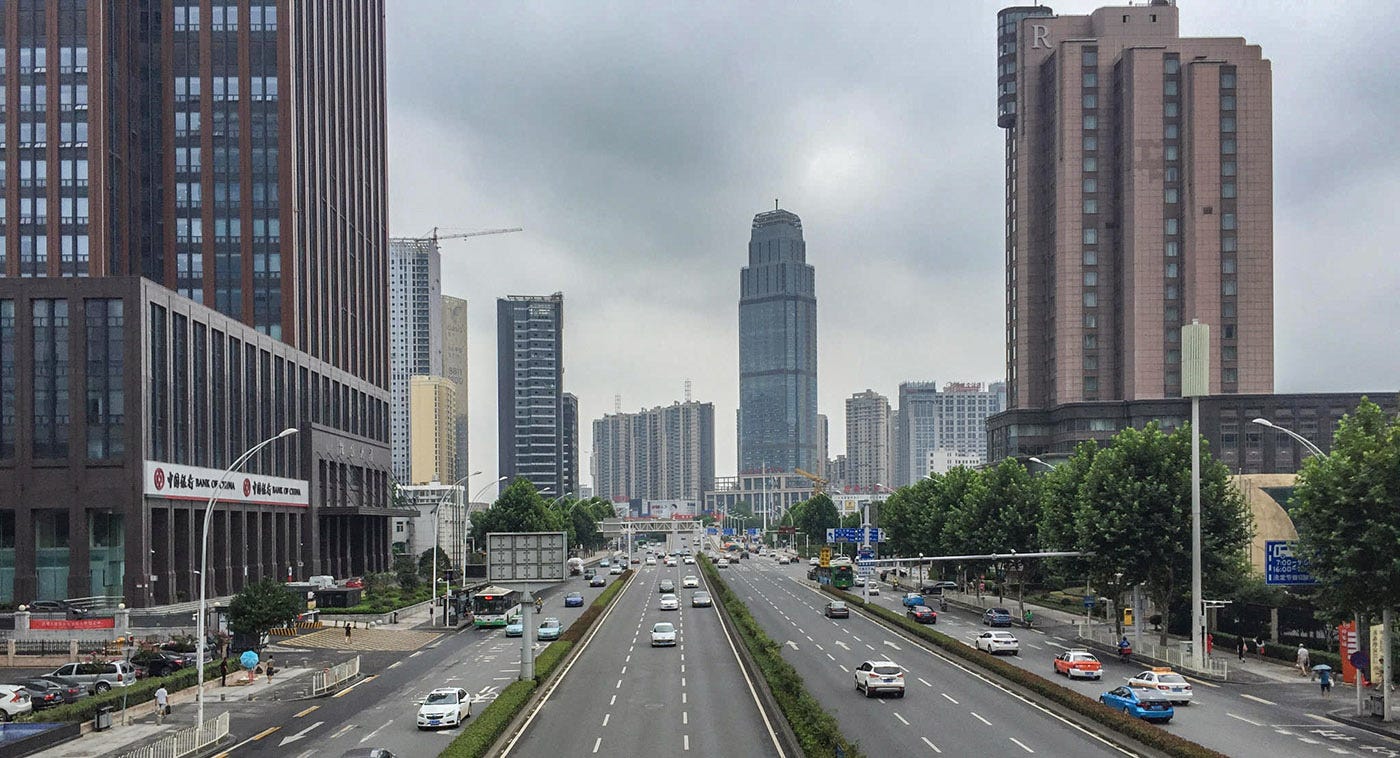Which city has the biggest potential to become China's fifth tier-one city?
Some possibilities
This is a very interesting question and I’d like to look at this from a big picture and super long-term (e.g. beyond 2050) perspective. So instead of starting from consensus opinions today of how to define a Tier I city (e.g. politically vs. socio-economically), I wanted think about how things might evolve over a long-term horizon.
With this in mind, right now three [1] regions look very likely to emerge as megalopolises in the future:
Jingjinji: Beijing-Tianjin-Hebei
The Pearl River Delta [2]: Guangzhou-Shenzhen-Hong Kong-Zhuhai-Macau
The Yangtze River Delta: Shanghai-Hangzhou-Suzhou
In fact, the government is already investing very heavily into making this a reality. Each of these megalopolises will have well over 100 million people, be connected by rapid transit systems that can shuttle passengers from one end to the other in less than two hours and be filled with tremendous amounts of economic activity. They will be like today’s Greater Tokyo or the New York metropolitan area but on steroids. These gigantic urban beasts will ruthlessly swallow everything in their vicinity wholesale, eliminating from contention cities that are too close like Suzhou in the Yangtze Delta or Dongguan in the Pearl River Delta.
So to find a viable fourth contender, we will have to look outside these regions. One good place to start is a map of the major transportation arteries; for China, this is its high-speed rail system:
Based on this, I narrowed it down to three top contenders. I’ve also found them partner cities that they can pair up with to boost their chances of taking on the Big Three above.
(1) Chongqing-Chengdu
Chongqing is categorized as a “directly controlled municipality” alongside Beijing, Tianjin and Shanghai and its population is actually the highest out of three. However, it is the least urbanized out of the four with only 25% of its 30 million people actually living in the main urban area. It is roughly the size of the state of South Carolina so I think it is better to think of it more as a state that is only partially urbanized.
Politically, it is the most important city in China’s central region. It has a solid economy but is actually overshadowed by Chengdu (urban population: around 10 million) which lays a little under 200 miles to the west. But if the two can be merged together into one massive economic entity, Chongqing-Chengdu is probably the leading contender to be China’s next megalopolis.
(2) Wuhan-Changsha
Besides the cities that make up the three large megalopolises above, Wuhan is the next one down on the list in terms of urban population with about 10 million urban residents. It would need to combine forces with Changsha (4.6 million urban residents; located around an hour and a half away by HSR) to have a shot at taking on Chongqing.
I’m rooting for Wuhan-Changsha, purely for personal reasons.
(3) Shenyang-Changchun
The capital of Liaoning, Shenyang is the largest city in the Northeast region with around 7 million urban residents and is the closest major city to the Korean peninsula. The closest big city (and potential partner) is Changchun (urban population: 3.5 million), capital of neighboring Jilin province, about 70-80 minutes away via the fastest HSR train.
To be a viable megalopolis contender, Shenyang-Changchun needs a lot of luck – namely that the two Koreas successfully merge – so that it can position itself as China’s economic gateway into Korea. Since the chances of this happening soon is relatively low, I have Shenyang-Changchun as a very distant third.
Notes
[1] There are only three as opposed to the “four Tier I cities” because Guangzhou and Shenzhen have been mashed together. In some other categorizations, Tianjin is also considered a “National City” (a direct-controlled municipality) alongside Beijing, Chongqing and Shanghai but it eventually gets merged with Beijing.
[2] I looked more closely at the Pearl River Delta megalopolis in a previous answer: When will Shanghai overtake Hong Kong to be China’s biggest financial center?
This was originally published on Quora in February 2016.





